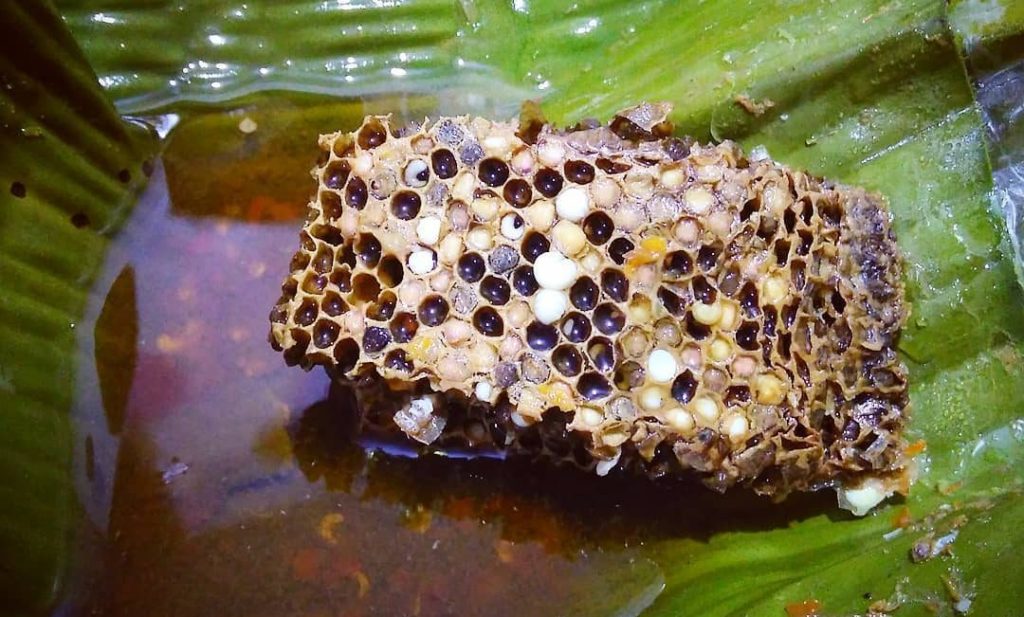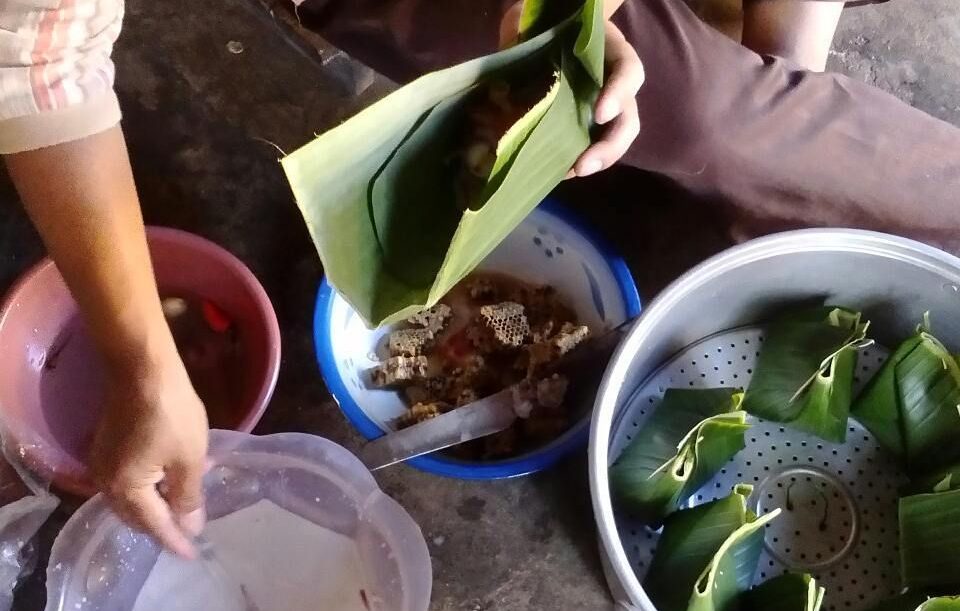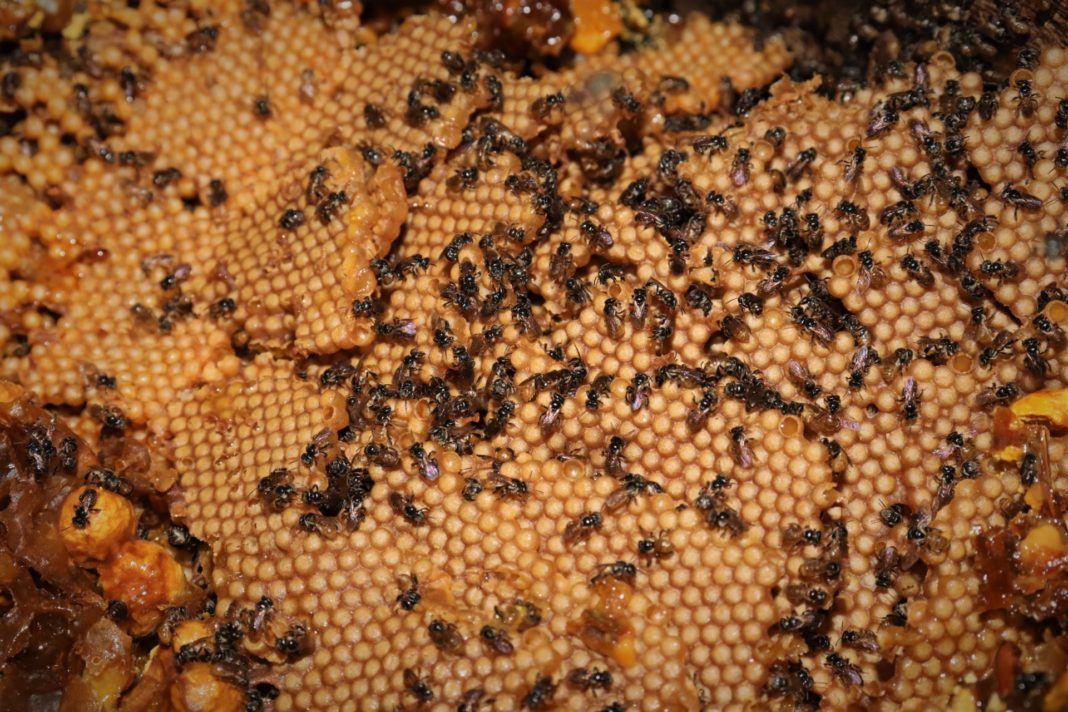
Botok Tawon is a dish that encapsulates the essence of Indonesian cuisine, combining a harmonious blend of fresh ingredients and aromatic spices. At its core, Botok Tawon is a steamed dish featuring grated coconut mixed with various flavorful elements. What sets it apart is the inclusion of tawon, or stingless bee larvae, adding a distinctive touch to the culinary experience.
Ingredients:

The key components of Botok Tawon include grated coconut, tawon (stingless bee larvae), shallots, garlic, galangal, turmeric leaves, lime leaves, lemongrass, and a medley of spices such as coriander, cumin, and tamarind. These ingredients are expertly combined to create a fragrant and flavorful mixture that forms the base of the dish.
Preparation:
The preparation of Botok Tawon is a meticulous process that involves finely chopping and grinding the ingredients to create a well-balanced mixture. The grated coconut serves as a crucial component, offering a creamy texture to complement the tender bee larvae. The mixture is then wrapped in banana leaves, forming compact parcels that are ready for steaming.

Botok Tawon is deeply rooted in Indonesian culinary heritage, reflecting the nation’s commitment to using locally sourced ingredients and traditional cooking methods. The use of banana leaves for wrapping not only imparts a subtle aroma to the dish but also pays homage to sustainable practices that have been passed down through generations.
The combination of coconut, spices, and bee larvae creates a taste sensation that is both savory and slightly sweet. The bee larvae contribute a unique texture and flavor, adding a delightful element to the dish. The steaming process ensures that the flavors meld together, resulting in a mouthwatering and aromatic culinary masterpiece.
Beyond its gastronomic appeal, Botok Tawon holds cultural significance in Indonesian society. It is often prepared during special occasions, ceremonies, or family gatherings, symbolizing unity and the joy of communal dining. The dish is a testament to the diverse culinary landscape of Indonesia, where each region boasts its own distinctive flavors and specialties.














